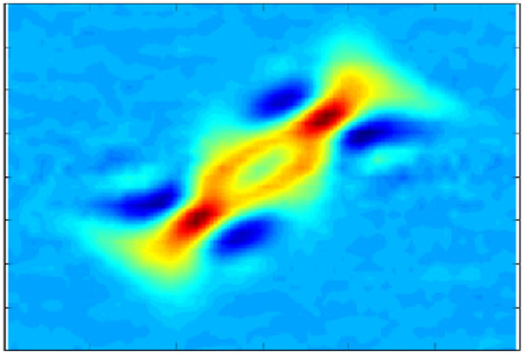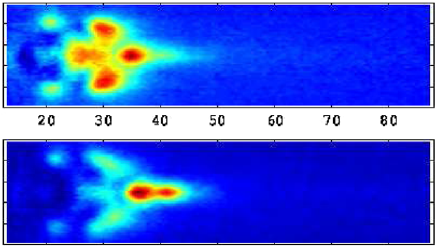GNU Nano-Archimedes
Introduction to nano-archimedes
nano-archimedes is a Technology Computer Aided Design tool (TCAD) for the simulation of various technology relevant situations involving the dynamics of electrons such as the transport in nanometer scale semiconductor devices (nanodevices) and the dynamics of N-body problems in quantum chemistry. It is based on the Signed Particle Formulation of quantum mechanics, a (computationally convenient) phase-space formalism which can simulate time-dependent quantum problems involving single- and many-body systems.
The Ethical Motivations, a New Paradigma in Science
GNU nano-archimedes has been created after observing the situation in the field of quantum simulations around the world. One easily observes that almost all codes developed for quantum simulations are non-free and/or proprietary codes. That is a very bad situation, especially for academic purposes, since it forces people to reinvent the wheel everytime a piece of code is needed. This surely slows down the progress of Science (immagine you had to rediscover the Newtonian laws every time you need them...).
In the current situation, we have a huge amount of papers describing a lot of numerical methods for advanced simulations of quantum systems, but it is still very complicated to access any of these codes, on which one could build new and even more advanced methods.
Would not it be better if we could avoid duplication of efforts in Science and Technology?
That is why nano-archimedes has been created...
Documentation
The following two papers are strongly suggested in order to start with nano-archimedes and the theory and method behind it:
J.M. Sellier,
"A Signed Particle Formulation of Non-Relativistic Quantum Mechanics",
Journal of Computational Physics, Volume 297, Pages 254–265, DOI: 10.1016/j.jcp.2015.05.036, (2015).
J.M. Sellier, M. Nedjalkov, I. Dimov,
"An introduction to applied quantum mechanics in the Wigner Monte Carlo formalism",
Physics Reports, http://www.sciencedirect.com/science/article/pii/S0370157315001982, (2015).
You can understand the algorithm developed in nano-archimedes and extend it to 2D and 3D spaces by reading this paper:
J.M.~Sellier, M.~Nedjalkov, I.~Dimov, S.~Selberherr,
A benchmark study of the Wigner Monte-Carlo method, Monte Carlo Methods and Applications,
De Gruyter, DOI: 10.1515/mcma-2013-0018, (2014).
You can utilize this code for density functional theory (DFT) calculations by following the details reported in the this paper:
J.M.~Sellier, I.~Dimov,
A Wigner Monte Carlo Approach to Density Functional Theory,
Journal of Computational Physics 270, pp. 265-277, (2014).
You can generalize this code to the time-dependent quantum many-body problem (ab-initio) by following the instructions reported in this paper:
J.M.~Sellier, I.~Dimov,
The Many-body Wigner Monte Carlo Method for Time-dependent Ab-initio Quantum Simulations,
Journal of Computational Physics 273, pp. 589-597 (2014).
For more information, lectures and results about nano-archimedes and the Wigner formalism, please visit the following website:
Do you want to support GNU Nano-Archimedes?
Please remember that the development of nano-archimedes is a volunteer effort, and you can also contribute to its development. For information about contributing to the nano-archimedes Project and/or request of enhancements and new features, please contact me at jeanmichel [dot] sellier [at] gmail [dot] com.
Downloading GNU Nano-Archimedes
If you are interested in downloading the lastest release of nano-archimedes, please visit the following website: www.nano-archimedes.com
Licensing
GNU Nano-archimedes is free software; you can redistribute it and/or modify it under the terms of the GNU General Public License as published by the Free Software Foundation; either version 3 of the License, or (at your option) any later version.

